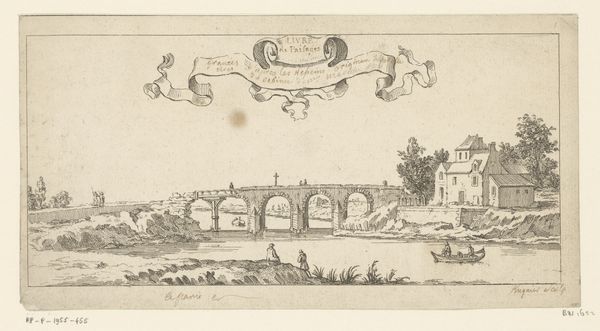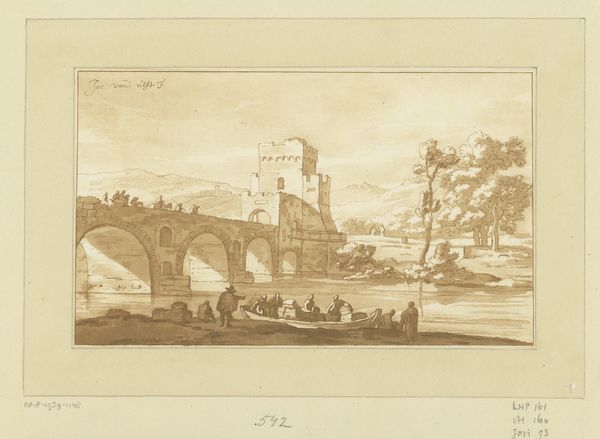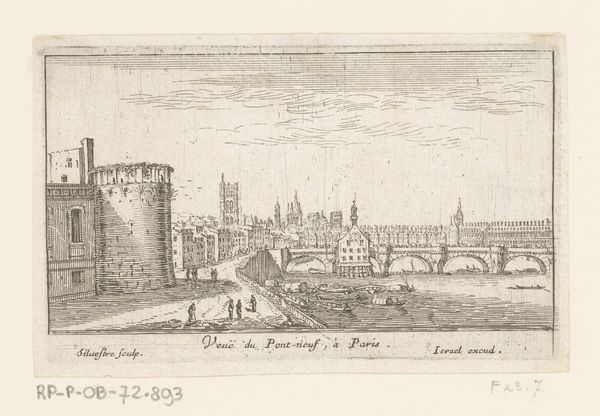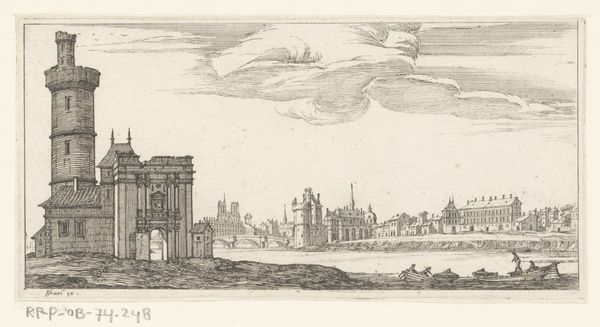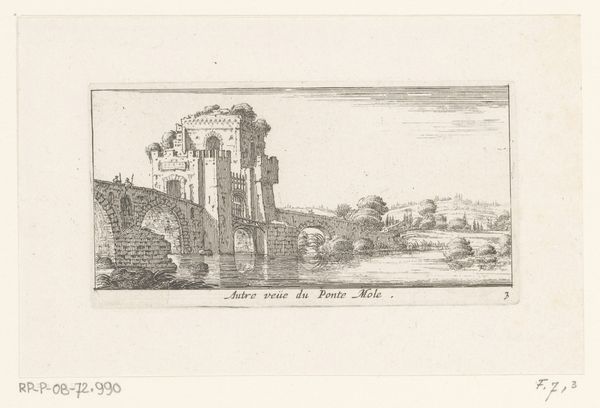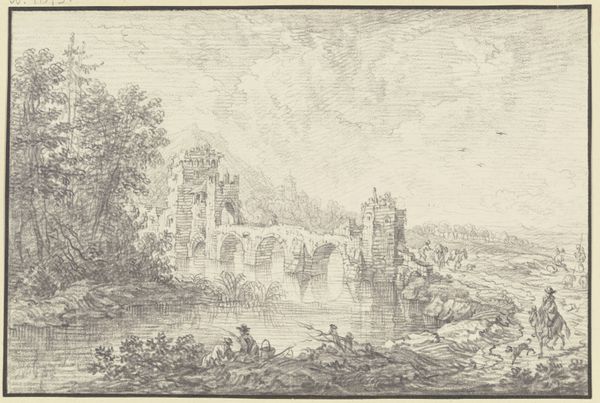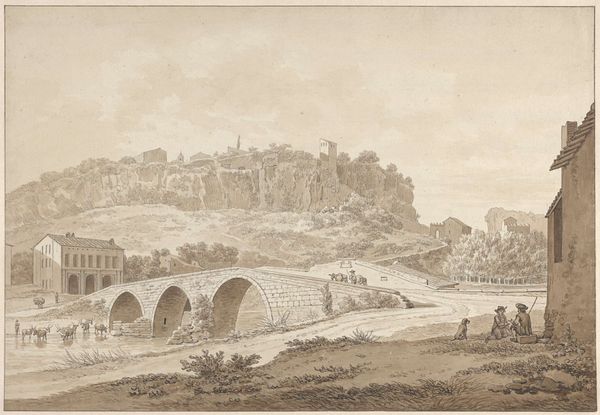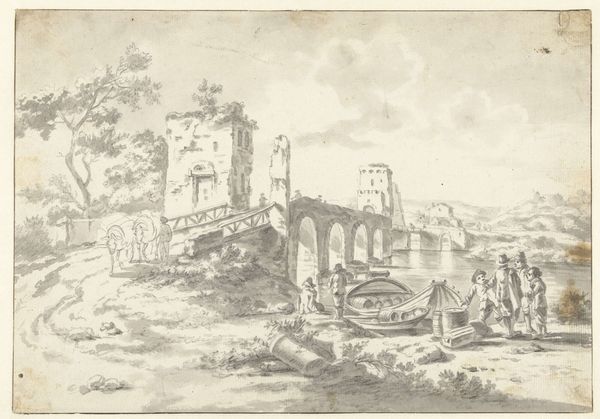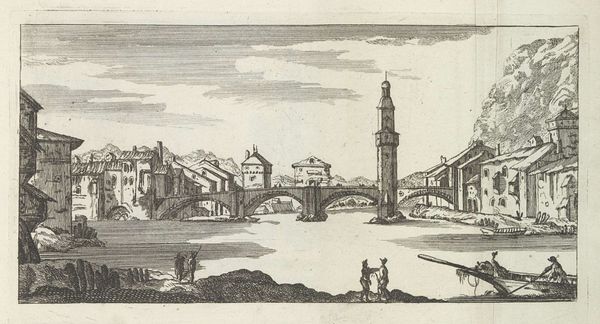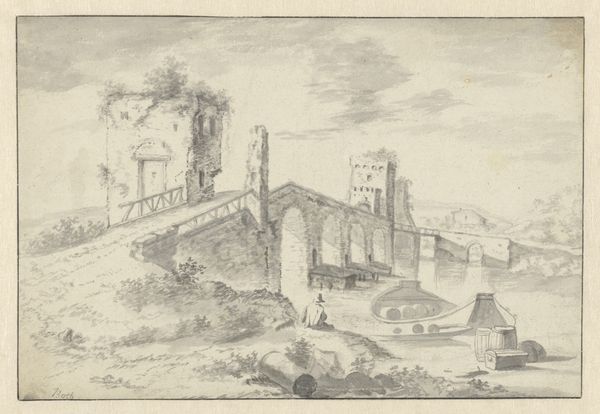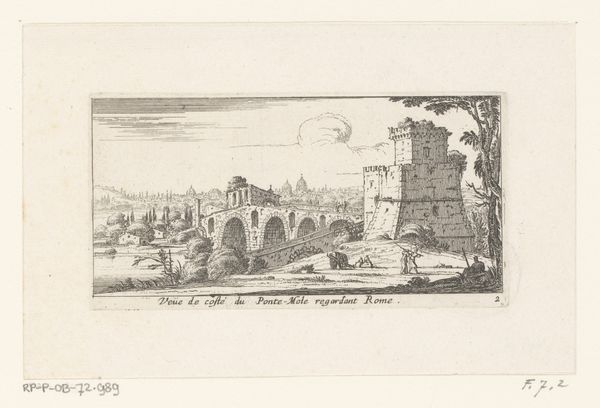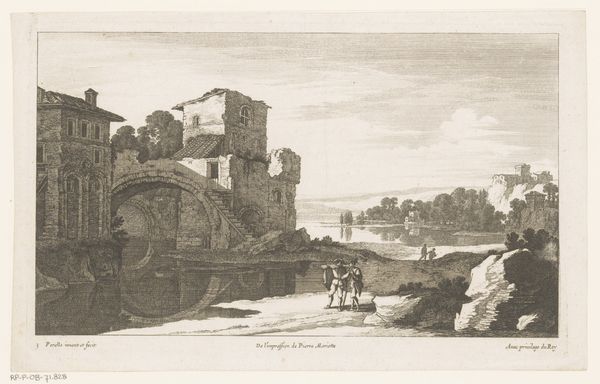
drawing, ink
#
drawing
#
baroque
#
landscape
#
perspective
#
ink
#
cityscape
Dimensions: height 66 mm, width 115 mm
Copyright: Rijks Museum: Open Domain
Jan van Call created this print of a bridge over the Tiber River sometime between 1656 and 1703, using etching. Etching is an intriguing process. The artist coats a metal plate with a waxy, acid-resistant substance, then scratches an image into the wax, exposing the metal. Immersing the plate in acid creates incised lines where the metal is bare. Ink is then applied to the plate, filling these lines, and the surface is wiped clean. Finally, the plate is pressed onto paper, transferring the image. Van Call would have needed a steady hand and careful planning to create this landscape. The acid bite is crucial; too little, and the lines are faint, too much, and they become blurry. The very character of the image resides in this alchemical process. Considering this print, it is important to remember that prints like these were made in multiples, to be sold, collected, and bound into books. It's a reminder that the visual culture of the time was as much about circulation and commerce as about individual artistic expression.
Comments
No comments
Be the first to comment and join the conversation on the ultimate creative platform.
